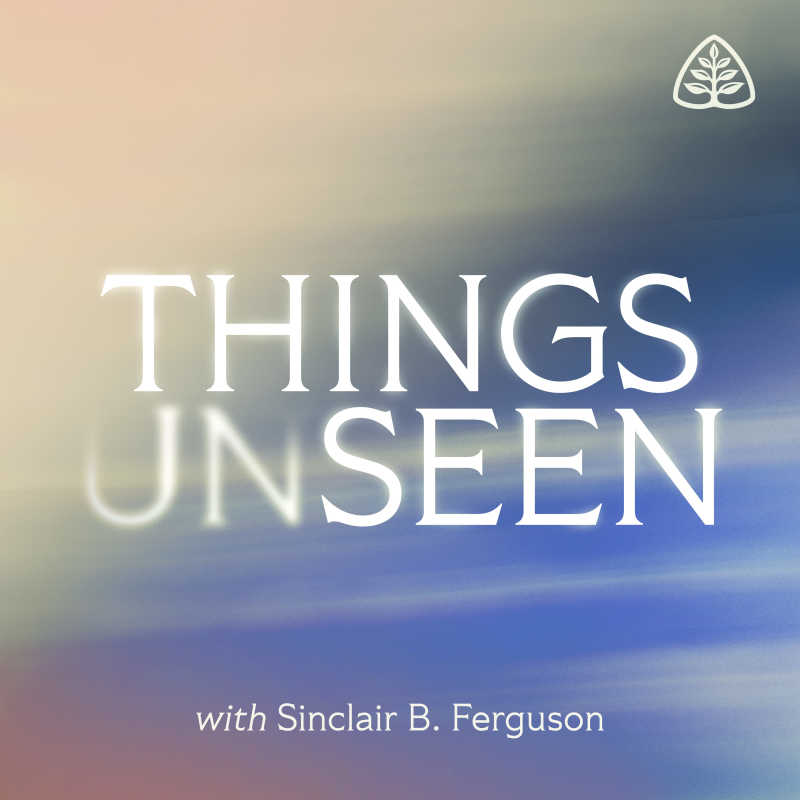Truly God and Truly Man

It is a marvel beyond our ability to fully comprehend: the eternal Son of God took on a human nature for our salvation. Today, Sinclair Ferguson draws from the Definition of Chalcedon to consider the two natures of Christ.
Transcript
This week on Things Unseen, we are thinking together about what helps us to meditate lovingly on our Lord Jesus Christ. And we began to do that because, I think, of a slight suspicion that many of us feel we’re scarcely able to reflect on him for any length of time. On Monday, I suggested that some Christians have long found that there are basic building blocks that help us. Christ is one divine person in whom there are two natures, a divine and a human nature, united in that one person. Yesterday, we were thinking about our Lord’s divine person. Today, I want to think with you about the fact that He has two natures.
The divine person of the Son of God has always had a divine nature. He has all the qualities of God. He is, as the Shorter Catechism says, infinite and eternal and unchangeable in His being, wisdom, power, holiness, justice, goodness, and truth. He’s the Lord of creation. He’s the Lord of providence, the Lord of history. And not only so, but as the divine Son, our Lord has always had a perfect union and communion with the Father and with the Spirit, always face-to-face with God, dwelling in unimaginably great mutual love and joy with the Father and with the Spirit. It’s knowing this that makes John’s statement at the beginning of his gospel so utterly amazing to us: “The Word became flesh and dwelt among us.” The eternal Word took on human nature, conceived as a male child in the womb of a young virgin named Mary in the remote region of the Roman Empire that had been renamed the province of Palestine.
In one sense, you can almost sympathize with the early Christian apologist Tertullian, when he wrote, “I believe this because it’s incredible,” although he should really have said he believed it, although it was incomprehensible. We can say it and believe it, we can describe it, but we know we can’t fully comprehend it, far less explain it. And then we remember, God is God, and we are not God, so this is hardly surprising. It’s hardly surprising either that the early Christian theologians had to work pretty hard to try and put all this into words. And when they did that, they knew they were not giving an explanation of the incarnation but a description of what happened and an exposition of it that would help protect Christians from taking false steps in the way they thought about or described the Lord Jesus.
Think about it this way. You don’t like people wrongly describing your wife, or your husband, or your father, or your mother, or your children, or your friends, do you? These great Christian thinkers wanted to prevent us from misdescribing the Lord Jesus.
In what’s called the Definition of Chalcedon, which was written in 451 AD, a group of Christian thinkers tried to distill the best way to summarize the biblical teaching. I’m going to close today’s podcast by reading it to you. It may just be the densest two minutes you’ll hear in this entire year of podcasts. And yes, unless you’re familiar with it, you’ll not be able to take it all in. But don’t worry, we’ll come back to it tomorrow, but I want to read it to you. Here’s the Definition of Chalcedon:
Following, then, the holy fathers, we all unanimously teach that our Lord Jesus Christ is to us one and the same Son, the self-same perfect in Godhead, the self-same perfect in manhood; truly God and truly man; the self-same of a rational soul and body; co-essential with the Father according to the Godhead, the self-same co-essential with us according to the manhood; like us in all things, sin apart; before the ages begotten of the Father as to the Godhead, but in the last days, the self-same, for us and for our salvation born of Mary the Virgin theotokos as to the manhood; one and the same Christ, Son, Lord, only-begotten; acknowledged in two natures unconfusedly, unchangeably, indivisibly, inseparably; the difference of the two natures being in no way removed because of the union, but rather the properties of each nature being preserved, and both concurring into one person and one hypostasis; not as though He was parted or divided into two persons, but one and the same Son and only-begotten God, Word, Lord, Jesus Christ; even as from the beginning the prophets have taught concerning Him, and as the Lord Jesus Christ Himself has taught us, and as the symbol of the fathers has handed down to us.
Now, that’s a stunning statement, and I know it’s a mouthful, but perhaps one or other of those words grabs you and makes you feel, “I need to think more about that.” And I hope we’ll be able to do that tomorrow if you join us for Things Unseen.

